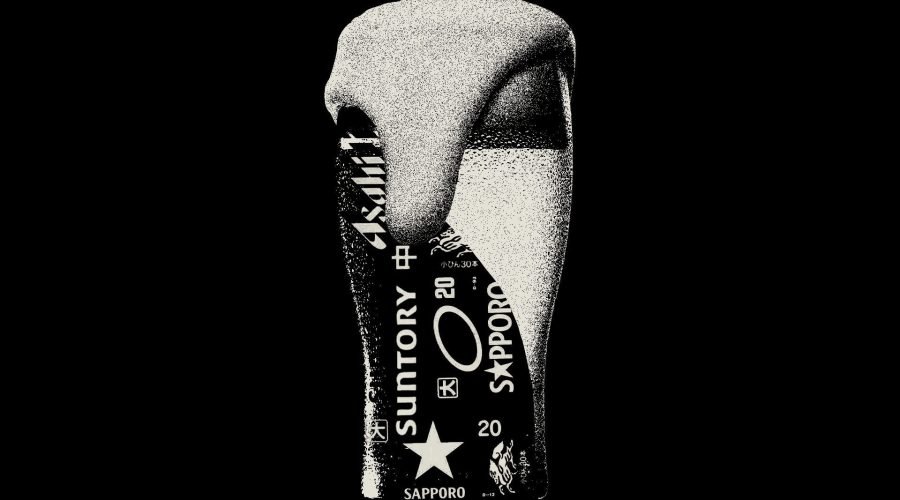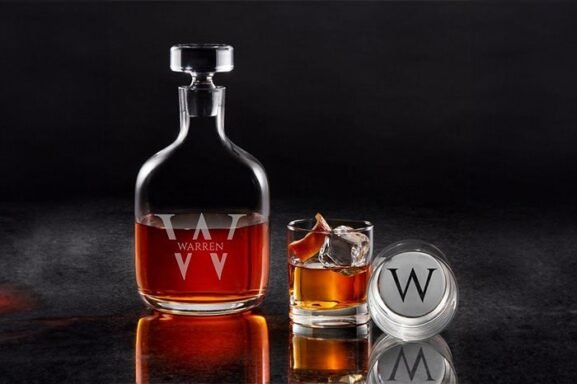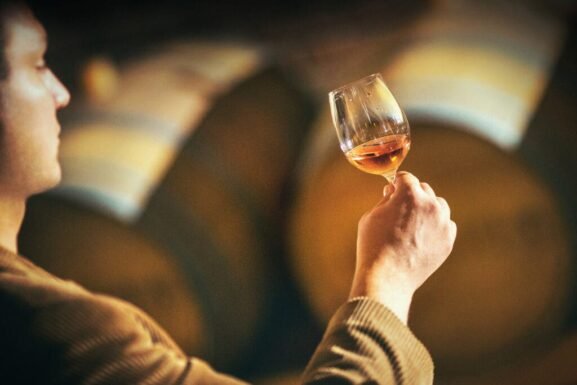The Best Japanese Beers to Drink Right Now
American beer has influenced the world—but now, Japanese beer is starting to return the favor.
Over the past half-decade, a handful of big Japanese brewing companies have made major investments in North America, starting with Sapporo’s purchase of San Francisco’s historic Anchor Brewing Company in 2017. Two years later, Kirin bought Colorado’s New Belgium, followed by Bell’s Brewery in Michigan in 2021. Sapporo fired back by buying another California legend, Stone, in 2022. Then, at the start of this year, Asahi announced its plans to purchase Octopi, a large but mostly under-the-radar Wisconsin brewery that contract-brews beer for several leading craft brands. Asahi initially plans to make at least 700,000 cases per year at Octopi, though additional investments are possible, the company noted.
You May Also Like: Cheers! Toasting Traditions from Around the World to Try This Season
So, what do all these moves mean? You’re much more likely to see beers from Japan’s big producers in wide distribution across the U.S. and Canada. And it’s not just big brands from Japan that are turning heads on this side of the Pacific: A number of the country’s craft brewers have also earned dedicated fans in North America, thanks to their embrace of special techniques, unusual ingredients and often charmingly quirky label art.
This versatility is what makes the island nation’s beer scene so appealing, says Ry Beville, a lecturer in Japanese literature at U.C. Berkeley and publisher of the bilingual magazine Japan Beer Times.
“Japanese craft brewers make excellent examples of classic styles, from pilsners to IPAs, but most consumers outside of Japan probably look forward to drinking Japanese craft beers that incorporate native ingredients,” he says. Those unusual local flavors can come from things like sushi rice and yuzu fruit, as well as time in barrels that were used to make shoyu, a.k.a soy sauce, and Japanese whisky.
You May Also Like: In Sake, Sustainability Is a Time-Honored Tradition
Other producers are taking inspiration from another Japanese beverage: sake. Joe Stange, managing editor of Craft Beer & Brewing magazine, recently returned from a tasting trip in Japan. One standout, he says, was a rice saison from Osaka’s Craft Beer Base, where that brewery’s take on Belgium’s traditional farmhouse ale style was fermented with koji (i.e. Aspergillus oryzae) the mold that is used to make both sake and soy sauce. “The result was crisp, brightly herbal, almost minty, bitterish and dry, reminding me somehow of cool grass, as well as cool sake,” he says. “I loved it.”
While that beer might be limited to Japan, at least for now, it showcases the unusual processes and ingredients that are available to Japanese brewers, many of whom are now shipping cans and bottles to our side of the Pacific. Those beers seem to be finding an audience: Google searches for “Japanese beer” recently hit a high they hadn’t seen since the end of 2005. Imports of Japanese beer to the U.S. grew by 14.8% from 2021 to 2022, according to the Observatory of Economic Complexity (OEC), the most recent year for which it offers data.
With those new shipments coming our way, there’s never been a better time to learn more about Japanese beer firsthand. So, which ones should you drink today? Check out the best Japanese beer curated by experts.
Sapporo Premium (Sapporo Breweries, 4.9% abv)
This is a delicate pilsner-esque lager beer, thanks to a healthy addition of Japanese rice.
“Sapporo is the smallest of the big three Japanese brands, but its blend of lightly toasted malt and delicate, herbal hopping makes it my favorite. In the Japanese fashion, rice contributes to its crisp finish, and that makes it ideal at the dinner table. It goes especially well with seafood, and I love it with crab or lobster.” —Jeff Alworth, author of The Beer Bible and the Beervana blog and podcast
$18.50 (12-Pack)
Total Wine

Tokyo White (Far Yeast Brewing Co., 6% abv)
Echoing the Belgian tradition, this saison-style ale is light, fruity and thirst-quenching.
“One of the better Japanese breweries exporting to the United States is Far Yeast, based in Kosuge, in the mountains about 50 miles west of Tokyo. Far Yeast Tokyo White is a beautifully delicate and super-drinkable wheat beer fermented with saison yeast—floral and pome-fruity in the nose, pleasantly tangy, then dry on the palate. You could drink a lot of it, easily.” —Joe Stange, managing editor of Craft Beer & Brewing magazine
$5
Giannone Wine & Liquor

Hitachino Nest Ancient Nipponia (Kiuchi Brewery, 6.5% abv)
This imperial pilsner is based on a heritage barley cultivar and an aromatic hop cultivar.
“A great beer with a great story—brewery owner Toshiyuki Kiuchi revived Japan’s Kaneko Golden variety of malting barley from a mere sixteen seeds, eventually growing enough to create Nipponia, a strong lager spiced with Japanese Sorachi Ace hops for a full, citrusy, slightly vanilla-ish flavor.” —Stephen Beaumont, co-author of The World Atlas of Beer and chief reviewer at Beaumont Drinks
$6
Total Wine

Asahi Super Dry (Asahi Breweries, 5% abv)
The best-selling rice lager balances delicate bitterness with high, Champagne-like carbonation.
“To many outside of Japan, Asahi Super Dry may seem like nothing more than a ‘beer-flavored beer,’ a light-bodied lager with a trace of hop bitterness, but it captures a perfect balance between European premium lagers and American ‘lite’ lagers. It pairs well with almost any food, from sushi to steak, and the more you sample, the more that slight bitterness starts to shine through, encouraging just one more glass.” —Daniel Morales, author of the newsletter How to Japanese
$11 (6-Pack)
Total Wine

Orion Draft Beer (Orion Beer Co., 5% abv)
This is connoisseur’s choice among bottled rice lagers, with hints of black pepper and tropical fruit.
“This beer reminds me of home—it’s funny how an item made across an ocean can do that. Orion sparks memories of exploring classic American lagers with friends. It has a mild complexity that reminds me of numerous regional American lager brands we’ve tried over the years, categorically similar in refreshment, but with more character than the mega brands.” —Zigmas Maloni, co-owner and curator at Chicago’s Beermiscuous beer cafés
$9 (6-Pack)
Vendome Wine & Spirits

Kuro Kuro (Hideji Beer, 9% abv)
This hoppy imperial stout is flavored with chestnuts from southern Kyushu.
“This brewery in a rural prefecture of southern Japan known for its beaches quietly releases some of Japan’s best craft beers. A gold medal winner in the specialty beer category at the 2022 World Beer Cup, Kuri Kuro offers a wonderful nuttiness from the chestnuts that complements roasted flavors of the malt. Sip it with a Japanese whisky.” —Ry Beville
$7
ShopWineDirect

Echigo Koshihikari (Echigo Beer Co., 5% abv)
This is a craft take on the mass-market rice lager style from Japan’s first microbrewery.
“I’ve always found this malt-forward pale lager refreshing to the core, and the foam quality impresses. Specific ingredients and process can really make a beer—promoting a local Niigata ingredient like the Koshihikari rice cultivar is representative of the locality where this beer is brewed, while complementing the imported German barley and hops.” —Zigmas Maloni
$3
Mission Wine & Spirits

Hitachino Nest Anbai Ale (Kiuchi Brewery, 7% abv)
Ume green plums and local sea salt take Hitachino Nest’s strong white ale to new heights.
“It almost seems like Hitachino Nest can do no wrong—they consistently make great beers, usually with Japanese-specific ingredients, too. This slightly tart ale is infused with sour plums from the brewery’s rural environs, as well as Japanese sea salt. Drink one with raw oysters.” —Ry Beville
$9
BevMo
FAQs
Is Sapporo Beer Japanese?
Yes—mostly. Sapporo is one of the oldest breweries in Japan, founded in the city of the same name on the northern island of Hokkaido in 1876. Since then, however, the brewery has expanded massively. Today, it owns multiple production facilities, including some in the U.S. and Canada, which make most of the Sapporo beer that is sold in North America. As such, the Sapporo you’re sipping might not be Japanese in the sense of it having been exported from Japan, but it is made by a Japanese company with very deep roots in the Japanese brewing tradition.
How Do You Say “Beer” in Japanese?
Derived either from the English word “beer” or the German word “bier,” the most common Japanese word for a fermented, malt-based beverage is written “ビール” and pronounced “bi-ru.” Try to say “beetroot” without pronouncing the Ts and you’re pretty much there.
What Is Japan’s Most Popular Beer?
By volume, the current best-selling beer in Japan is Asahi Super Dry.
How Is Japanese Beer Different?
That depends on the type of beer. For mass-market, so-called “pilsner” pale lagers, the frequent use of rice means that most Japanese beer is less heavy and more “dry” on the palate than beers from elsewhere.
However, Japan is also home to happoshu, an unusual category of not-quite beers. Literally meaning “sparkling alcoholic beverage,” happoshu includes beverages with less than 67% barley malt, sometimes with very little malt at all, which puts them in a different tax category. They generally offer beer-like flavors at slightly lower price points.
Does Japanese Beer Taste Like American Beer?
Generally, yes. In many styles, Japanese beer is just a little bit lighter in body and crisper on the finish, compared to similar versions from U.S. producers. But when it comes to craft beers, the use of local ingredients and equipment—from sweet potatoes to koji—can bring truly unique flavors to each glass.
Published: March 22, 2024


